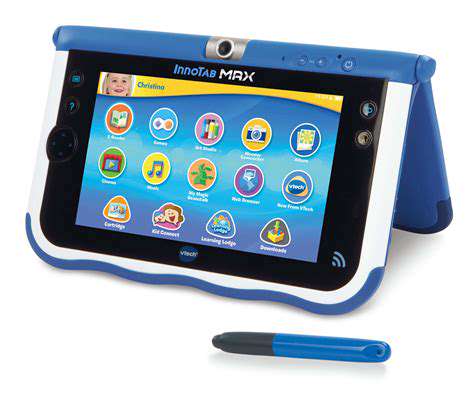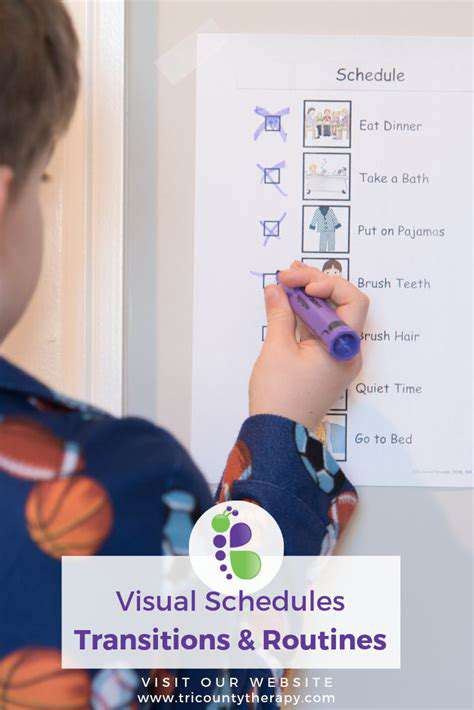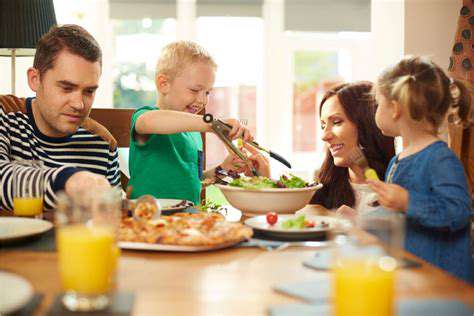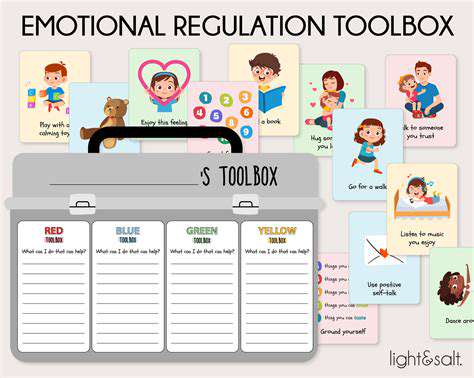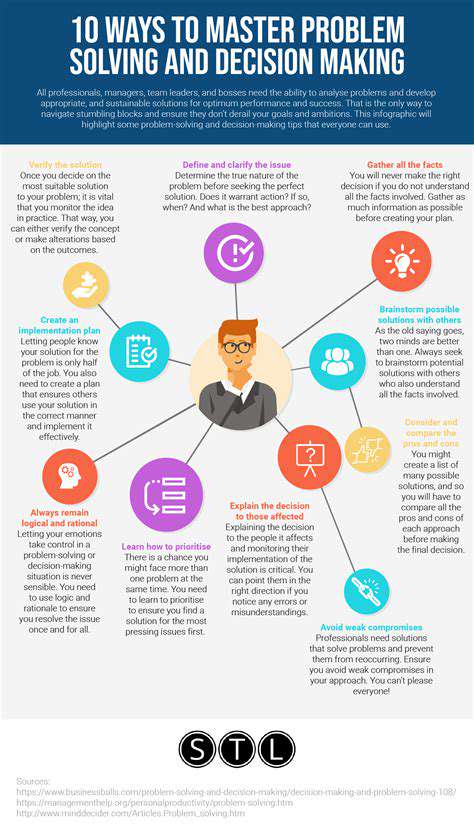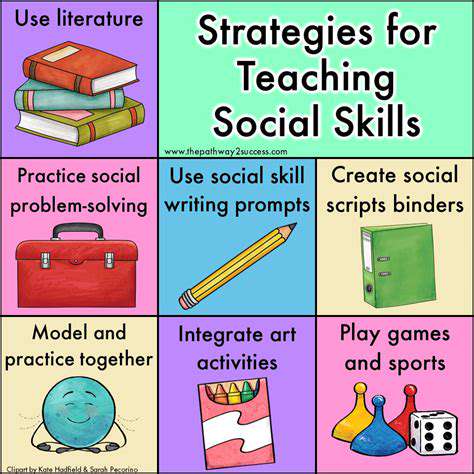Encouraging Independent Play: Fostering Creativity and Self Reliance
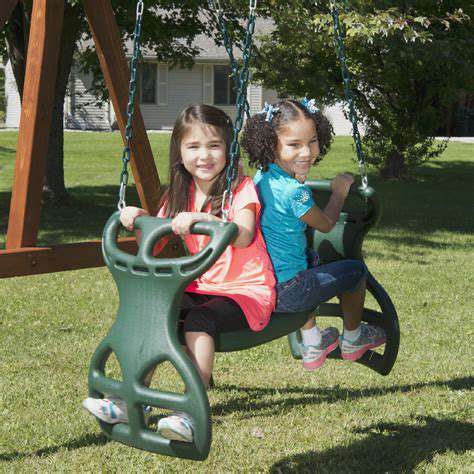
Unleashing Creativity and Imagination
Playtime is a crucial catalyst for igniting creativity and fostering imagination in children. Through play, children explore different scenarios, roles, and perspectives, developing their ability to think outside the box and generate novel ideas. This imaginative exploration is fundamental to problem-solving and critical thinking skills, as children learn to adapt and improvise in playful contexts. Play allows children to experiment with different possibilities without fear of judgment, encouraging them to embrace the unknown.
Developing Social and Emotional Skills
Play provides a unique platform for children to develop essential social and emotional skills. Interactions with peers during play activities allow them to learn cooperation, negotiation, and compromise. Through collaborative play, children learn to navigate social dynamics, build relationships, and understand diverse perspectives, which are crucial for success in all aspects of life. They also learn to manage emotions, express themselves effectively, and develop empathy for others.
Boosting Cognitive Development
Play is intrinsically linked to cognitive development. Engaging in various play activities, whether structured or unstructured, challenges children's cognitive abilities. Children learn to think strategically, solve problems, and make decisions through playful experiences. This process of mental stimulation strengthens their memory, attention span, and overall cognitive abilities, laying a strong foundation for future academic success.
Enhancing Physical Development
Play is essential for promoting healthy physical development in children. Active play, such as running, jumping, and climbing, strengthens muscles, improves coordination, and enhances gross motor skills. Fine motor skills are also honed through activities like drawing, building with blocks, and manipulating small objects. This physical activity helps children develop a healthy lifestyle and maintain a balanced physical well-being.
Promoting Emotional Well-being
Playtime offers a vital outlet for emotional expression and regulation. Through play, children can explore and process their emotions in a safe and supportive environment. Play allows children to relieve stress, anxiety, and frustration, fostering a sense of well-being and emotional resilience. It provides a healthy way for children to cope with challenges and navigate their feelings, ultimately promoting their emotional well-being.
Strengthening Parent-Child Bonds
Engaging in playtime activities together strengthens the bond between parents and children. Shared play fosters a sense of connection and intimacy, allowing parents to understand their children's needs and perspectives more deeply. Quality time spent playing with children creates lasting memories and strengthens the parent-child relationship, impacting the child's emotional security and development. These shared moments of play provide opportunities for communication and mutual understanding, creating a more nurturing and supportive family environment.

Recognizing and Celebrating Independent Play: Acknowledging the Value
Understanding the Significance of Independent Play
Independent play, often underestimated, is a crucial component of a child's development. It allows children to explore their creativity, develop problem-solving skills, and cultivate a sense of self-reliance. Observing a child engrossed in their own world, whether it's building a magnificent castle of blocks or meticulously arranging miniature figurines, reveals a profound understanding of their inner world and the power of self-directed learning. This period of focused activity fosters concentration, imagination, and a deeper understanding of their surroundings. It's a time for exploration, discovery, and the development of essential life skills.
Encouraging a child's independent play is not just about leaving them alone; it's about providing the necessary space, resources, and encouragement for them to thrive. Recognizing the value of this solitary engagement allows parents, educators, and caregivers to appreciate the profound benefits it has on a child's overall well-being. This is more than simply a child playing by themselves; it's a chance for them to learn, grow, and discover their potential in a safe and nurturing environment.
The Benefits of Allowing Children to Play Independently
Children who are allowed to engage in independent play develop a remarkable sense of self-sufficiency and confidence. They learn to entertain themselves, navigate challenges, and find solutions to problems without constant adult intervention. This ability to self-regulate is a vital life skill that extends far beyond childhood, empowering them to become resourceful and resilient individuals. Independent play fosters creativity, encouraging children to imagine scenarios, develop storylines, and explore their inner worlds in unique and imaginative ways.
Furthermore, independent play allows children to develop crucial social-emotional skills. Through solitary play, they learn to regulate their emotions, manage frustration, and develop their own internal motivations. These experiences lay the groundwork for future relationships, fostering empathy and understanding of others' perspectives.
Creating an Environment that Fosters Independent Play
Providing an environment conducive to independent play involves more than just leaving a child to their own devices. It necessitates a thoughtfully designed space filled with age-appropriate toys, books, and resources that spark curiosity and imagination. A dedicated play area, stocked with diverse materials, can inspire hours of engaging play. This doesn't require elaborate setups; simple, open-ended toys, like blocks, play-dough, or art supplies, can stimulate hours of creative exploration.
Additionally, encouraging independent play involves fostering a supportive and encouraging atmosphere. Creating a safe space where children feel comfortable exploring and taking risks is paramount. This involves minimizing interruptions and distractions, allowing children to fully immerse themselves in their chosen activities. Parental presence, offering gentle guidance and encouragement without over-controlling, can further enhance their independent play experience.
Recognizing and Supporting Different Play Styles
It's crucial to acknowledge that children have different play styles. Some children thrive on solitary activities, while others prefer collaborative play. Recognizing and respecting these diverse preferences is essential for fostering a healthy and supportive environment. Instead of assuming a single play style, parents and educators should observe and adapt their approach to meet each child's unique needs. Encouraging diverse play styles within a supportive atmosphere can lead to a more well-rounded and confident individual.
Understanding and appreciating the value of independent play is essential for fostering a child's overall development. Creating opportunities for independent play will equip children with essential life skills, promoting self-reliance, creativity, and social-emotional growth, ultimately contributing to their well-being and success in life.
